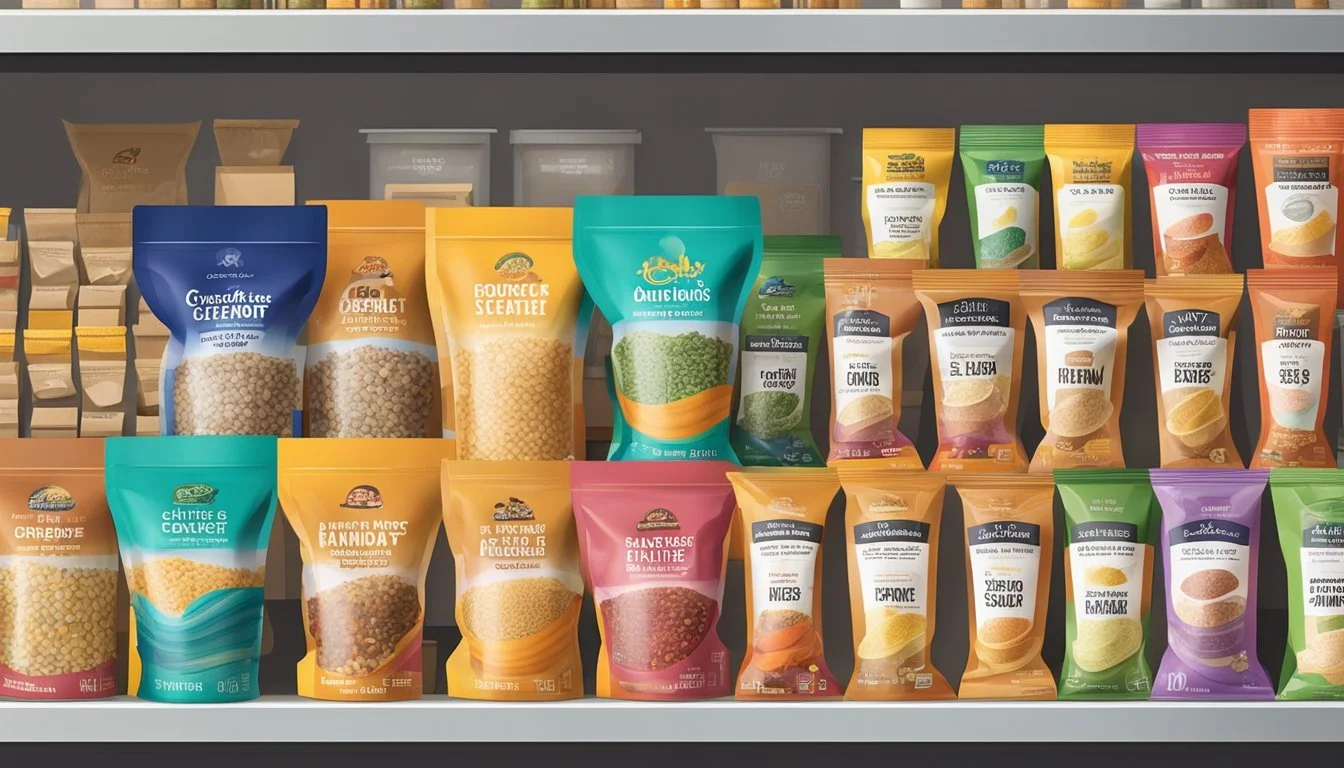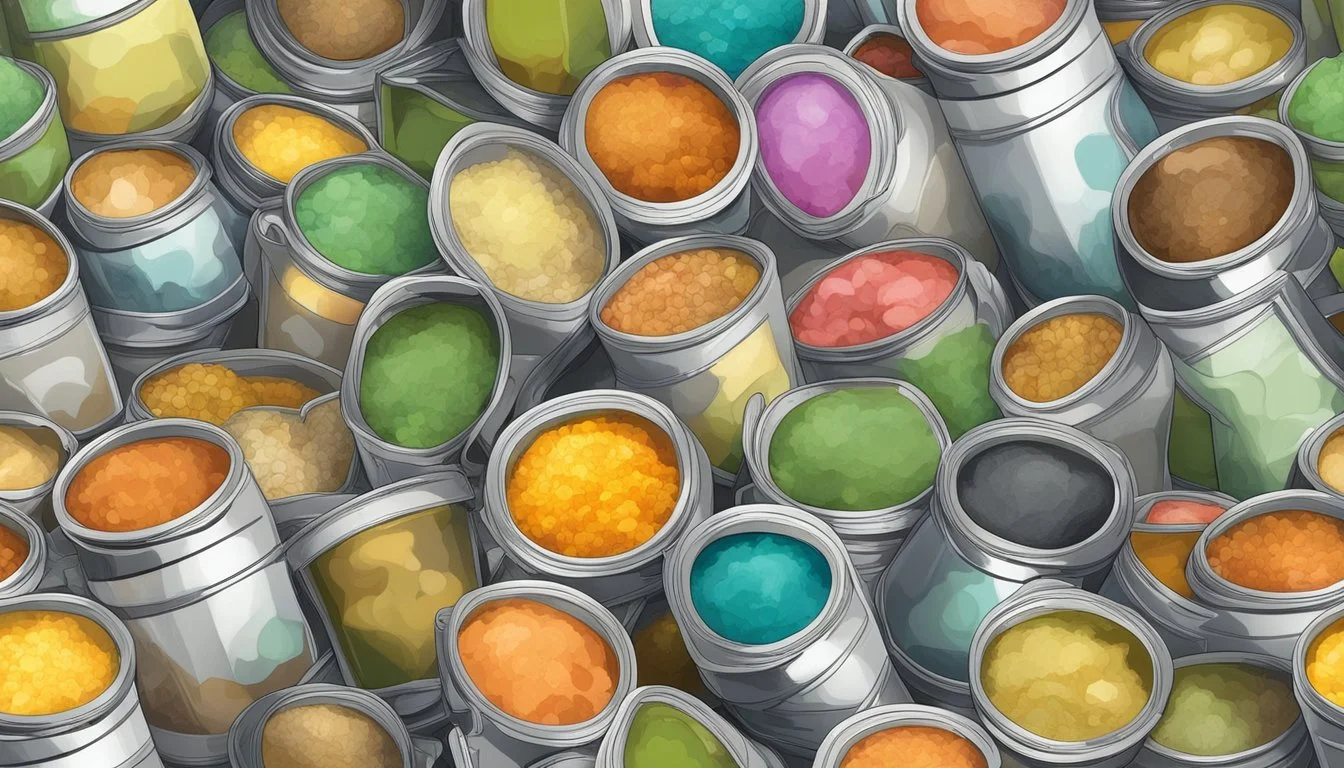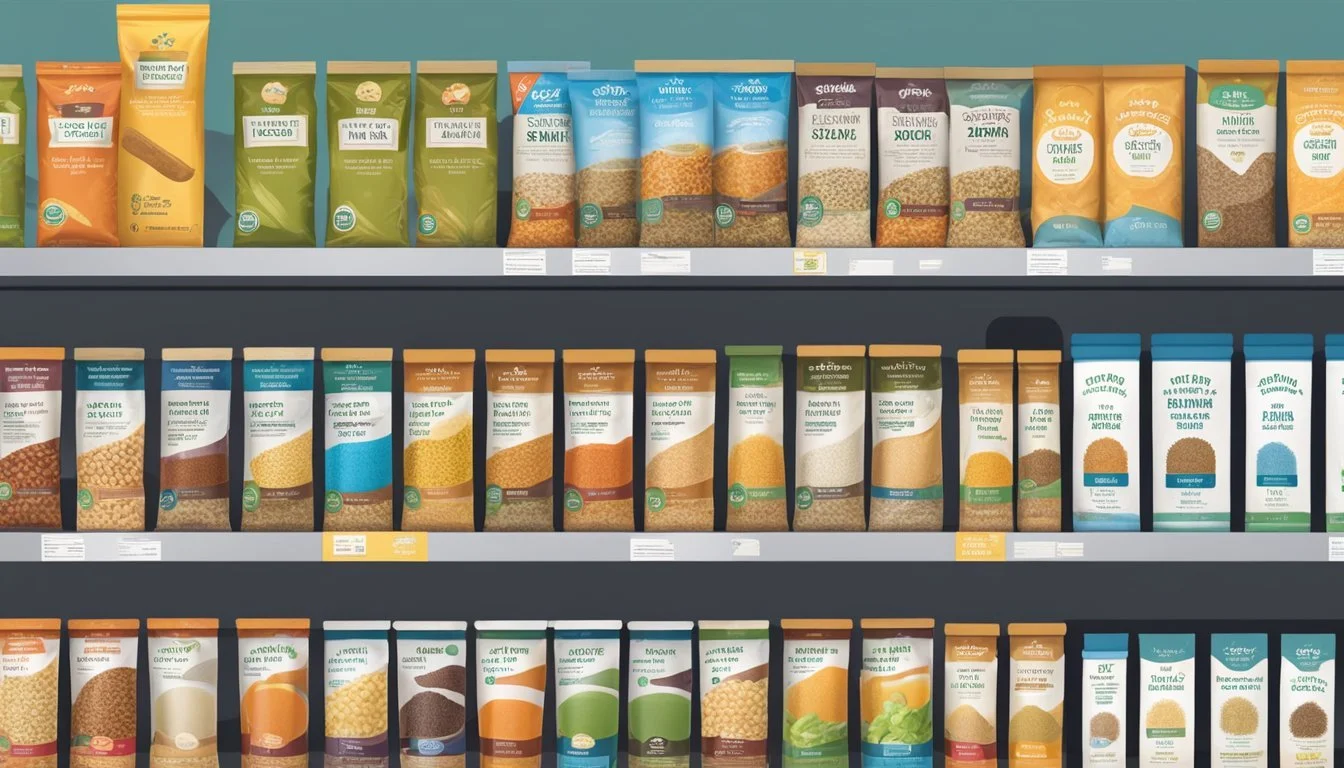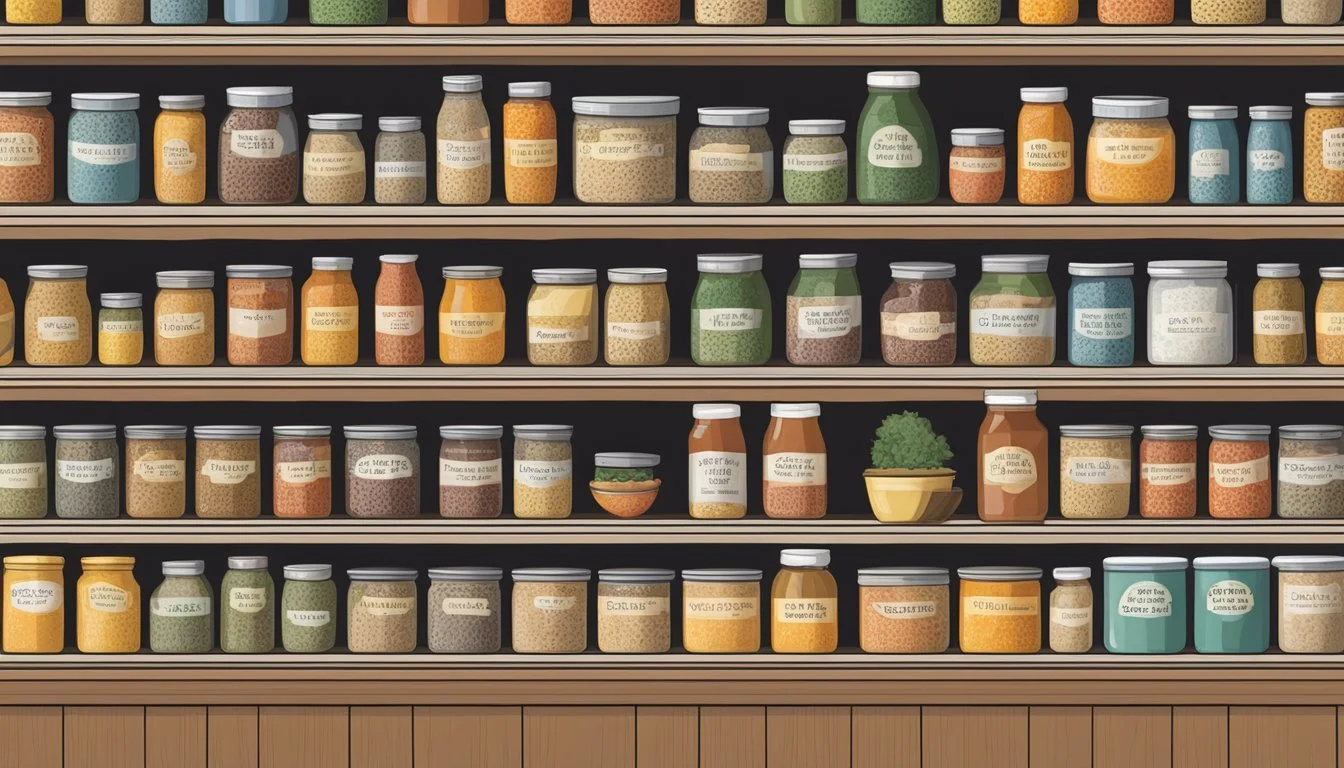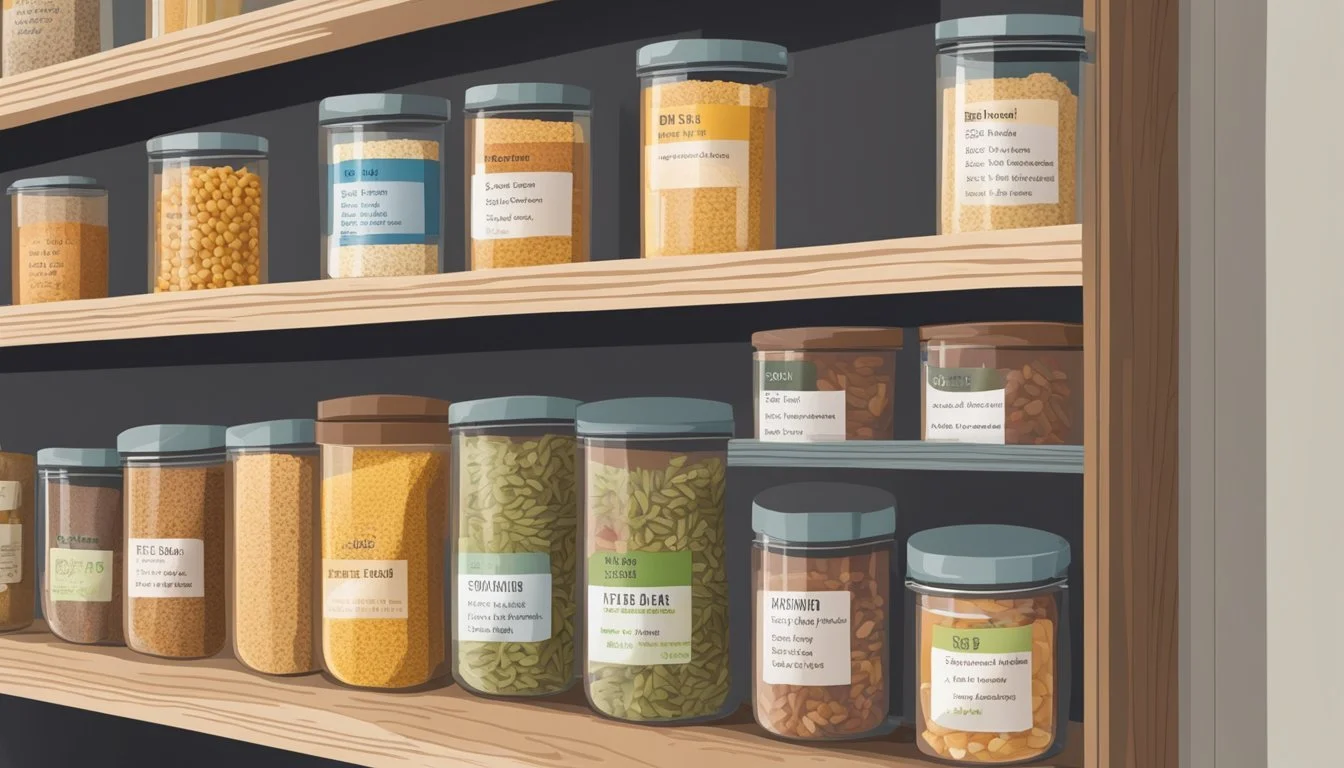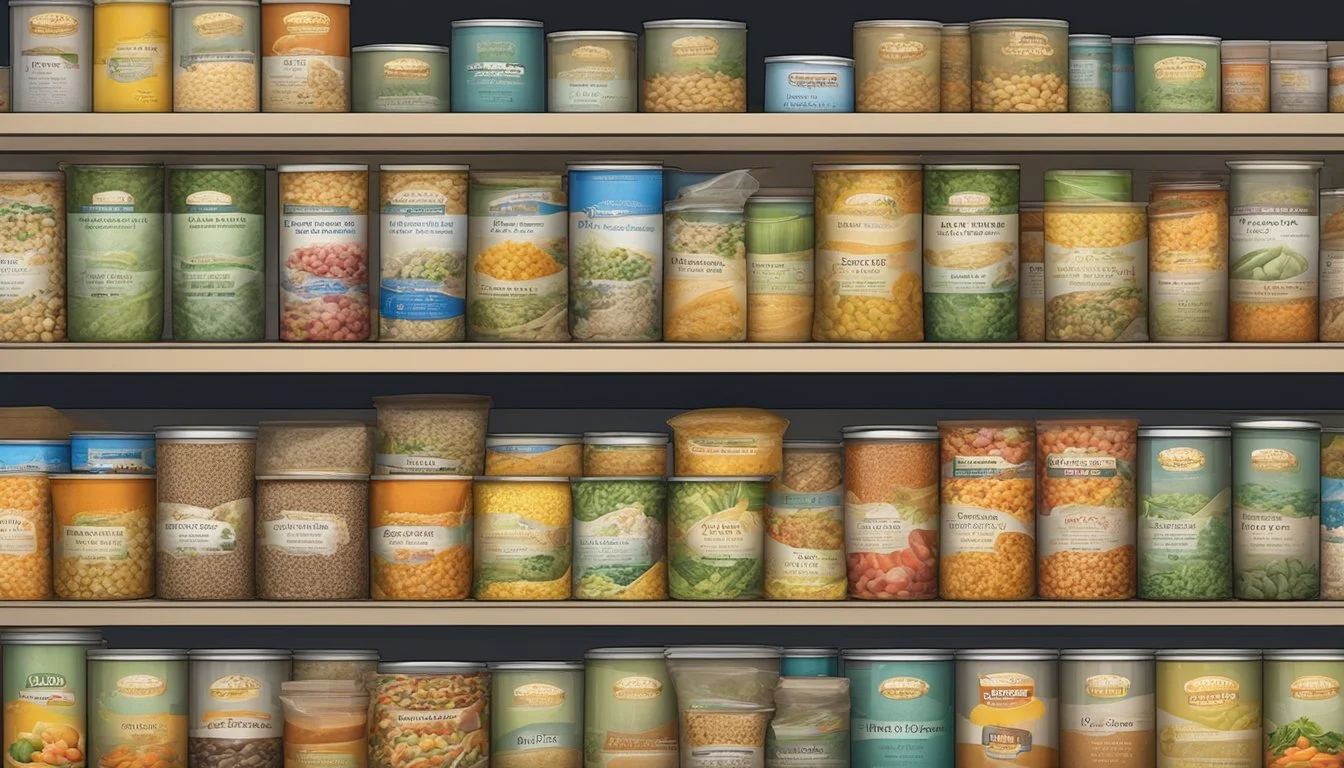How Long Do Dried Soup Mixes Last?
Shelf Life and Storage Tips
Dried soup mixes offer a convenient and long-lasting option for quick meals, making them a staple in pantries around the world. Understanding the shelf life of these mixes is important for both quality and safety reasons. Typically, a package of dried soup mix will maintain its best quality for about 18 to 24 months if stored properly. The "expiration" or "best by" dates on the packaging are indicators of peak quality rather than safety, indicating that the product may still be safe to consume beyond these dates.
Storage conditions play a crucial role in the longevity of dried soup mixes. When stored in a cool, dry place and kept tightly sealed, these mixes can remain safe to eat for years. Signs of spoilage, such as off odors or visible mold, would indicate that the mix is no longer safe to consume, regardless of the printed date. It is essential to inspect the packaging for any damage or signs of infestation as these factors can also compromise the quality and safety of the product.
Despite variations in texture, color, or flavor that might occur over time, dry soup mixes that are stored correctly and show no signs of spoilage continue to be a reliable and nutritious food source. They can be especially valuable for long-term storage, emergency preparedness, and situations where a quick meal is necessary without sacrificing nutritional content.
Understanding Dried Soup Mixes
Dried soup mixes offer convenient and long-lasting meal solutions that can vary greatly in ingredients and types available on the market.
Composition of Dried Soup Mixes
Dried soup mixes consist primarily of dehydrated vegetables (how long do dehydrated vegetables last?), legumes, and grains, alongside a variety of seasonings. They commonly include onions, carrots, and celery acting as the base for many mixes. Protein can be added in the form of dehydrated meat or textured vegetable protein. Fiber content is inherently high due to the presence of whole grains and legumes. Depending on the brand and type, the sodium content can vary, with some mixes offering low-sodium options. Vitamins and other nutritional value components are retained through the dehydration process, providing a nutrient-dense food option.
Types of Dried Soup Mixes
There is a wide range of dried soup mixes available catering to different dietary preferences and needs. These include:
Vegetable: Rich in fiber and nutrition, typically vegan.
Chicken Noodle: Often includes bits of dehydrated chicken and simple quick-cooking pasta.
Beef Barley: Contains dehydrated beef, barley, and a hearty mix of vegetables.
Each type provides a unique profile of nutrition, including essential vitamins, fiber, and protein.
Determining the Shelf Life
Determining the shelf life of dried soup mixes involves understanding storage conditions and interpreting date labels. These factors help consumers ensure the longevity and best quality of their product.
Shelf Life Factors
Several factors influence the shelf life of dry soup mixes. Primarily, storage conditions play a crucial role. To maximize longevity, it is recommended that these mixes be stored in a cool, dry area away from direct sunlight, heat, and moisture, which can lead to spoilage. Ideal storage conditions are critical to maintaining the product's peak quality for as long as possible.
Expiration and Best By Dates
The terms best by, best before, and best when used by dates on dry soup mixes are indicators of peak quality rather than safety. A package of soup mix past its 'best by' date may still be safe to consume if it shows no signs of spoilage. Consumers should understand that these dates are not hard-and-fast expiration dates but rather the manufacturer's estimate of when the product will be at its best flavor and quality.
Storage Solutions for Extended Freshness
To ensure the longevity of dried soup mixes, it is crucial to maintain ideal storage conditions and use proper packaging methods. These practices help protect the mixes from factors that can degrade their quality over time.
Ideal Storage Conditions
The storage environment plays a pivotal role in preserving the freshness of dried soup mixes. These food storage staples should be kept in a cool, dry place away from direct light and heat, which can lead to degradation. Ensuring that the storage area maintains a consistent temperature and low humidity levels is essential, as fluctuations can negatively affect the mix's shelf life.
Temperature: Aim to keep your storage area below 70°F (21°C).
Humidity: A relative humidity level of less than 15% is ideal.
Light: Store your soup mixes in a dark place or in containers that block light to prevent nutrient loss and spoilage.
Proper Packaging for Longevity
The right packaging materials can greatly enhance a dried soup mix's lifespan by protecting against moisture, air, and pests. Airtight containers, such as mylar bags or mason jars, are preferred options.
Airtight Containers: Use containers with airtight seals, such as mason jars with screw-top lids.
Mylar Bags: For added protection, consider mylar bags with oxygen absorbers to remove residual air.
By employing these storage solutions, one can considerably extend the freshness of dried soup mixes, keeping them ready for use substantially beyond their stated expiration date.
Recognizing Signs of Spoilage
When assessing dried soup mixes for spoilage, one should pay close attention to visible changes and smell. These indicators can reliably signal whether the food is no longer suitable for consumption.
Visible Changes to Watch For
One must scrutinize the contents for discoloration such as yellowing or browning, which could suggest degradation due to exposure to moisture and air. Also, the appearance of mold, which can manifest as fuzzy or speckled growths, confirms spoilage and the mix should be discarded. The texture of the dried mix is another telltale sign; if ingredients appear mushy or clumpy rather than dry and loose, spoilage is likely.
Olfactory Indicators of Spoilage
The presence of an off odor is a significant sign that dried soup mixes may have spoiled. Trust one's sense of smell; if the mixture emits an unusual or unpleasant smell, it could indicate bacterial growth or chemical changes within the product, meaning it has gone bad and should not be consumed.
Safeguards Against Contaminants
When considering the longevity of dried soup mixes, one must prioritize safety by preventing contamination. These protective measures and handling precautions are paramount for maintaining the quality and safety of the product.
Protective Measures
Storage: To protect dried soup mixes from environmental contaminants and pests, they need to be stored in airtight containers. Refrigerators or freezers can offer an additional layer of protection against pests and can potentially extend the shelf life of the product.
Airtight Containers: Seal the soup mix in containers that are impervious to air and moisture.
Cool Environment: Store in a cool, dry place away from direct sunlight.
Pest Control: Ensure your storage area is free from insects and rodents.
Preservatives: While dried soup mixes naturally have a low moisture content that inhibits the growth of contaminants, some may contain natural or synthetic preservatives that extend their shelf life by protecting against bacterial growth and oxidation.
Handling and Cooking Precautions
Before Use: Before handling dried soup mixes, one should ensure their hands are clean to prevent the introduction of bacteria. Check the packaging for any signs of damage or exposure that could indicate contamination.
Inspect Packaging: Look for any tears, holes, or signs of moisture that could indicate spoilage or contamination.
Wash Hands: Always handle food with clean hands to minimize the transfer of bacteria.
During Cooking: Proper cooking is crucial as it can kill potential pathogens present in dried food products. One should adhere to the recommended cooking instructions and internal temperatures to ensure safety.
Follow Instructions: Adhere to the cooking time and temperatures specified on the package.
Internal Temperature: Ensure the soup reaches a safe internal temperature to eliminate bacteria.
Nutritional Considerations and Health Impacts
When considering the nutritional aspects and health implications of dried soup mixes, it is important to examine both the benefits they may offer as well as the potential decrease in nutritional value over time.
Health Benefits of Dried Soup Mixes
Dried soup mixes often contain a variety of dehydrated vegetables, legumes, grains, and seasonings, which are sources of important nutrients. They generally provide a low-fat option for meals, often with a significant amount of dietary fiber and protein. The nutrient composition in a single serving of dried soup mix may include:
Fiber: Supports digestive health and can help regulate blood sugar levels.
Protein: Essential for muscle repair and growth.
Vitamins: Various types, such as A and C, depending on the vegetables included.
Minerals: Such as iron and potassium, contributing to overall health.
Potential Nutrition Loss Over Time
While dried soup mixes can be a nutritious addition to the pantry, their nutritional value may diminish over time. This degradation is especially true for vitamins that are sensitive to storage conditions and time:
Vitamin Potency: Vitamins, particularly vitamin C, can degrade over time, especially if exposed to heat, light, or moisture.
Caloric Value: Remains relatively stable, but the quality of the calories in terms of nutrient density may decline.
Flavor and Aroma: Although not strictly nutritional, a decrease in flavor can also indicate a loss of some of the food's nutritional compounds.
Ensuring optimal storage—cool, dry conditions away from direct sunlight—helps to maintain the nutritional value and shelf life of these soup mixes.
Culinary Uses and Recipe Integration
Dried soup mixes are versatile staples that can upgrade everyday cooking and preserve the essence of recipes. These mixes commonly include a selection of dehydrated vegetables, legumes, and a fusion of seasonings, making them ideal for extending the shelf-life of flavorsome ingredients.
Creative Cooking with Dried Soup Mixes
These mixes can be used as a base for chicken noodle or vegetable soup, offering a convenient and time-saving option for cooks. Recipe integration is straightforward: simply add water or broth to rehydrate and cook. For a more robust flavor, chefs may introduce bouillon or enhance the mix with fresh ingredients such as meats or additional vegetables.
Bean mix soups (What wine goes well with soups?) can gain depth with the inclusion of paprika or curry spices, crafting a rich and hearty meal.
Seasonings like black pepper can be tweaked to suit one's taste, ensuring that the revived dish maintains its intended zest.
Recipe Preservation and Adaptation
The process of maintaining the integrity of older recipes through the use of dried soup mixes is an exercise in culinary resourcefulness. Dried soup mixes aid in recipe preservation by providing a consistent flavor base that does not degrade quickly over time, unlike fresh ingredients or even canned food.
When fresh produce is not an option, a vegetable soup made from a dried mix can stand in without compromising taste.
Canned soup can be enhanced with additional dried mix to increase its volume and nutritional content.
By incorporating dried soup mixes into everyday recipes, chefs can preserve the traditional taste of dishes while adapting to the modern needs of long-lasting ingredients and storage constraints.
Maximizing Soup Mix Longevity
To extend the shelf life of dried soup mixes, it's essential to focus on effective storage techniques. These strategies include leveraging freezing methods and other alternative preservation approaches, ensuring the mixes maintain their quality over time.
Freezing Techniques
Freezing dried soup mixes can significantly enhance their longevity. Users should:
Transfer the soup mix into airtight containers or heavy-duty freezer bags to prevent freezer burn.
Label the containers with the current date, aiding in meal planning and inventory management.
Thaw at room temperature when ready to use, allowing for a transition back to optimal quality for consumption.
Alternative Preservation Methods
In addition to freezing, other methods can be employed to preserve dried soup mixes:
Packaging: Storing mixes in Mylar bags with oxygen absorbers can extend shelf life by creating an environment that hinders oxidation and microbial growth.
Preservatives: Though not always necessary, the addition of natural preservatives such as vitamin C powder can act as an extra barrier against spoilage.
Environmental Control: Keeping soup mixes in a cool, dry area away from sunlight helps prevent degradation of the product.
Practical Tips for Preppers and Emergency Use
For preppers, the longevity and security of their food supply are paramount. Dried soup mixes offer an excellent solution for emergency preparedness due to their long shelf life and easy-to-use nature.
Stockpiling and Rotation Strategies
Bean Mixes and Bouillon: Preppers should aim to stock a variety of dried soup ingredients such as bean mixes and bouillon cubes. These components are not only nutritious but also provide a base for countless soup variations.
First In, First Out (FIFO): Rotate your stock to use the oldest items first, ensuring your supply remains fresh.
Inventory Management: Regularly check expiration dates and inspect for corrosion or damage to the packaging.
Potato Flakes and MSG: Include ingredients like potato flakes (how long does potato flakes last?) for thickening soups and a small amount of MSG (if dietary preferences permit) for flavor enhancement without compromising health guidelines such as those by the ADA.
Homemade Mixes: Creating homemade soup mixes can also be a cost-effective way to tailor nutrition to specific dietary needs.
Long-Term Food Security Measures
Proper Storage Conditions: The longevity of dried soup mixes can be extended by ensuring:
Dry conditions to prevent moisture absorption and spoilage.
Airtight containers to mitigate the risk of oxidation and pests.
Cool, dark storage to minimize nutrient degradation from light exposure.
Dried soup mixes generally have an excellent shelf life, often up to five years, but with proper storage, they can be safe and viable well beyond that time frame. Preppers should verify storage guidelines specific to each ingredient, as homemade mix longevity may vary from commercially packaged products.
Comparison With Other Food Preservation Methods
Preserving food extends its shelf life and helps maintain nutritional value. Dried soup mixes, one of many preservation methods, offer unique advantages over other options such as canned goods and fresh produce.
Dried Soup Mixes vs. Canned Goods
Dried soup mixes typically last considerably longer than canned soup due their low moisture content, which inhibits the growth of microorganisms. A proper storage environment can extend their viability past their expiration date, sometimes up to five years or more. Canned goods also have long shelf lives, generally up to two years, but they can be susceptible to spoilage through rust, dents, or compromised seals.
Shelf-Stability:
Dried Soup Mixes: Can last 5+ years.
Canned Food: Usually has a shelf life of 1-2 years.
Storage Space:
Dried Soup Mixes: Require less space, no liquid added.
Canned Food: Bulky due to water weight and packaging.
Dried soup mixes are also typically lighter and more compact than canned food, making them easier to store in large quantities. In contrast, canned food's weight and volume can be limiting factors due to the presence of liquid.
Benefits Over Fresh Produce
Dried soup mixes offer a longer shelf life compared to fresh ingredients, often without the need for preservatives. Fresh produce is rich in nutrients but can spoil quickly, usually within days to a couple of weeks. Dried soup mixes lack the water content that fresh ingredients have, which is a major factor in food spoilage.
Nutritional Content:
Dried Soup Mixes: Retain most nutrients through the drying process.
Fresh Ingredients: Nutrients may diminish rapidly post-harvest.
Preparation Ease:
Dried Soup Mixes: Easy to prepare, often just needing rehydration.
Fresh Ingredients: Require cleaning, chopping, and cooking.
By removing water, dried soup mixes concentrate flavors and potentially extend the utility of seasonal ingredients beyond their natural harvesting period. They are also readily accessible and convenient, circumventing the need for continuous refrigeration like fresh produce.


